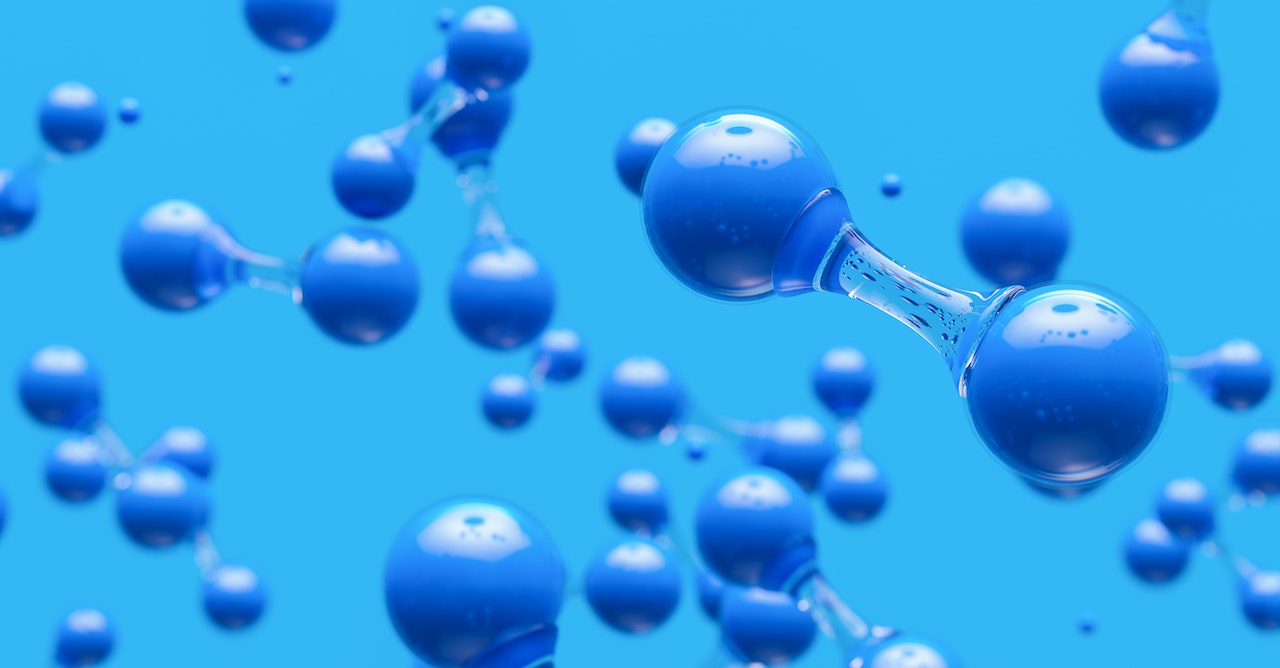The polarity of water molecules is a fundamental concept in chemistry, with implications for various scientific disciplines. Understanding the molecular structure of water and the factors that contribute to its polarity is essential for comprehending its unique properties.
This article delves into the science behind water polarity, exploring concepts such as electronegativity and hydrogen bonding. By comparing polar and nonpolar molecules, we will gain insight into the real-life examples of water polarity and its significance in biological systems.
Key Takeaways
- Water molecules are polar due to the unequal distribution of electrons, with the oxygen atom having a slight negative charge and the hydrogen atoms having slight positive charges.
- The polarity of water molecules allows for the formation of hydrogen bonds, which are important for biological processes such as protein folding and DNA replication.
- Electronegativity and polarity play a crucial role in understanding hydrogen bonding, as hydrogen bonds occur when hydrogen atoms are bonded to highly electronegative elements.
- Water’s polarity has various implications in healthcare, environmental science, and engineering, as it enables water to dissolve polar substances, repel non-polar substances, and affects solubility, temperature, and chemical reactions.
The Science Behind Water Polarity
The polarity of water molecules arises from the unequal distribution of electrons between the oxygen and hydrogen atoms. This unequal sharing creates a dipole, with the oxygen atom having a slight negative charge and the hydrogen atoms having slight positive charges.
The resulting polar nature of water molecules allows for the formation of hydrogen bonds. Hydrogen bonds occur when the positive end of one water molecule attracts to the negative end of another water molecule.
These intermolecular forces are crucial for various biological processes, such as protein folding and DNA replication. The strength of these hydrogen bonds can be measured by quantifying the dipole moment, which is a measure of how much separation there is between positive and negative charges within a molecule.
Understanding Molecular Structure
Electronegativity and polarity play crucial roles in determining the molecular structure of compounds.
Electronegativity is a measure of an atom’s ability to attract electrons towards itself in a chemical bond.
Polarity refers to the separation of charges within a molecule.
Understanding the implications of electronegativity and polarity is essential for comprehending the phenomenon of hydrogen bonding.
Hydrogen bonding occurs when hydrogen atoms are bonded to highly electronegative elements such as oxygen or nitrogen.
This results in strong intermolecular forces.
Electronegativity and Polarity
One important factor in determining the polarity of water molecules is the difference in electronegativity between oxygen and hydrogen atoms. The electronegativity of an atom refers to its ability to attract electrons towards itself in a chemical bond. In the case of water, oxygen has a higher electronegativity compared to hydrogen, resulting in an uneven distribution of electron density within the molecule.
To understand this concept further, consider the following:
- Hydrogen Bonding Strength: The polarity of water molecules allows for hydrogen bonding, which is a special type of dipole-dipole interaction. This intermolecular force plays a crucial role in many biological processes, such as protein folding and DNA replication.
- Dipole Moment Measurement: The degree of polarity can be quantified using dipole moment measurements. Water molecules have a relatively high dipole moment due to their polar nature.
- Importance in Serving Others: Understanding the polarity of water molecules is essential for various applications, including healthcare, environmental science, and engineering. It enables researchers and professionals to develop solutions that cater to societal needs effectively.
Overall, recognizing the impact of electronegativity on water’s polarity provides valuable insights into its unique properties and facilitates advancements for serving others efficiently.
Hydrogen Bonding Implications
Hydrogen bonding in water is a significant factor that influences various biological processes and has implications in fields such as healthcare, environmental science, and engineering.
Hydrogen bonds are formed between the positively charged hydrogen atoms of one water molecule and the negatively charged oxygen atoms of neighboring molecules. This unique bonding property allows water to exhibit high surface tension, capillary action, and thermal stability.
Furthermore, the presence of hydrogen bonding in water affects its polarity, which plays a crucial role in chemical reactions. Water’s polarity enables it to dissolve polar substances like salts and sugars while repelling non-polar substances like oils.
Additionally, hydrogen bonding can occur between water molecules and other molecules such as proteins and DNA, influencing their structure and function.
Understanding these implications is essential for designing drugs, developing environmental remediation strategies, and creating innovative engineering materials that serve the needs of others.
The Role of Electronegativity in Water Polarity
The magnitude of the difference in electronegativity between atoms within a water molecule plays a crucial role in determining its polarity. Electronegativity is a measure of an atom’s ability to attract electrons towards itself. In the case of water, oxygen has a higher electronegativity than hydrogen, resulting in an unequal distribution of electron density within the molecule. This leads to a partial negative charge on the oxygen atom and partial positive charges on the hydrogen atoms.
The role of electronegativity in water polarity can be understood through several key points:
- Hydrogen bonding: The unequal sharing of electrons due to electronegativity differences allows for strong electrostatic attractions between neighboring water molecules. These intermolecular forces, known as hydrogen bonds, contribute to many important properties of water such as its high boiling point and surface tension.
- Importance of molecular geometry: The arrangement of atoms within a molecule affects its polarity. In water, the bent molecular geometry ensures that the partially negatively charged oxygen atom is located at one end while the partially positively charged hydrogen atoms are at opposite ends, creating an overall polar molecule.
Understanding these aspects helps us appreciate how water’s unique polarity impacts its behavior and its essential role in serving others’ needs effectively.
How Hydrogen Bonding Makes Water Polar
The presence of strong electrostatic attractions between neighboring molecules contributes to various important properties of water. These intermolecular attractions are primarily due to the hydrogen bonding that occurs between water molecules.
Hydrogen bonds form when a hydrogen atom, covalently bonded to an electronegative atom such as oxygen or nitrogen, is attracted to the lone pair of electrons on another electronegative atom in a different molecule. In water, each oxygen atom can form hydrogen bonds with up to four neighboring molecules.
The strength of these hydrogen bonds is what makes water polar and gives rise to its high boiling point, surface tension, and solvent properties. The dipole-dipole interactions caused by the polarity of water also contribute to its ability to dissolve many substances and facilitate chemical reactions.
Understanding the role of hydrogen bonding in making water polar is crucial for serving others who rely on this unique property for various applications in industries such as medicine, chemistry, and environmental sciences.
Comparing Polar and Nonpolar Molecules
The distribution of charge in polar molecules plays a significant role in determining their properties and interactions.
Polarity arises from the uneven distribution of electron density within a molecule, resulting in regions of partial positive (δ+) and partial negative (δ-) charges.
This charge separation affects the solubility of polar substances in polar solvents, as like dissolves like due to the ability of similar charges to attract each other.
Charge Distribution in Polarity
Charge distribution in polarity can be observed in the water molecule. Water is a polar molecule due to its bent shape and the presence of oxygen and hydrogen atoms. The oxygen atom, being more electronegative than hydrogen, attracts the shared electrons towards itself, resulting in a partial negative charge (δ-) on the oxygen atom and partial positive charges (δ+) on the hydrogen atoms. This unequal distribution of charge creates a dipole moment within the water molecule.
The dipole moment of water contributes to its unique properties such as high boiling point and surface tension.
The charge distribution allows water molecules to form hydrogen bonds with neighboring molecules, leading to cohesion and adhesion.
This property facilitates various biological processes like capillary action, solvent ability for polar substances, and temperature regulation in organisms.
Understanding charge distribution in polarity is crucial for fields that involve serving others, such as healthcare and environmental science, as it helps explain phenomena related to solubility, transport of nutrients, and hydration processes within living organisms.
Effects on Solubility
The effects of charge distribution in polarity can be observed in solubility, where certain substances are more soluble in polar solvents due to the attraction between their charged components and the partial charges present in the solvent.
This phenomenon is crucial as it impacts various chemical reactions and has implications for temperature. When a polar substance dissolves in a polar solvent, energy is released as the attractive forces between the solute and solvent molecules overcome those within the solute or solvent alone.
This release of energy can lead to an increase in temperature, known as an exothermic process. Conversely, when a nonpolar substance dissolves in a polar solvent or vice versa, the process is endothermic, resulting in a decrease in temperature.
Understanding these effects on temperature and their impact on chemical reactions is vital for numerous applications, such as drug delivery systems and environmental monitoring techniques.
Real-Life Examples of Water Polarity
Notable instances where water polarity is observed include the behavior of water molecules during surface tension and capillary action.
Water’s polarity plays a crucial role in several everyday phenomena, highlighting its importance in various chemical reactions:
- Solvent power: Water’s polar nature allows it to dissolve many substances, making it an excellent solvent for essential processes such as hydration and digestion.
- Biological functions: Polarity enables water to form hydrogen bonds with biomolecules like proteins and nucleic acids, facilitating their structural stability and functioning.
- Surface tension and capillary action: The cohesive forces between polar water molecules result in high surface tension, allowing insects to walk on water and plants to transport nutrients against gravity.
Understanding these examples of water polarity enhances our comprehension of diverse natural processes while emphasizing its significance in supporting life-sustaining functions through chemical reactions.
Implications of Water Polarity in Biological Systems
Implications of water polarity in biological systems can be observed through the formation of hydrogen bonds with biomolecules, which contribute to the structural stability and functioning of proteins and nucleic acids. Water’s polar nature allows it to interact with other polar molecules, such as those found in cell membranes. This interaction plays a crucial role in maintaining the integrity and fluidity of cell membranes by forming hydrogen bonds with phospholipids. Additionally, water’s polarity is essential for protein folding, where hydrophobic amino acid residues are buried within the protein core while hydrophilic residues are exposed to the surrounding water molecules. The interactions between water and these residues help determine the proper folding and stability of proteins. Overall, understanding the effects of water polarity on cell membranes and its role in protein folding is fundamental for comprehending various biological processes.
| Effects on Cell Membranes | Role in Protein Folding |
|---|---|
| Maintains membrane integrity | Determines proper protein folding |
| Promotes fluidity of cell membranes | Influences stability of proteins |
| Forms hydrogen bonds with phospholipids | Affects hydrophobic-hydrophilic interactions |
Frequently Asked Questions
How Does Water’s Polarity Affect Its Boiling and Freezing Points?
The polarity of water molecules significantly impacts its boiling and freezing points. This is due to the effect of water’s polarity on solubility and its influence on chemical reactions, which ultimately affect the temperature at which water transitions between liquid and solid or gas states.
Can Water Molecules Form Hydrogen Bonds With Any Other Molecules Besides Other Water Molecules?
Water molecules have the ability to form hydrogen bonds with certain other molecules, including solvents. These interactions can impact the solubility of substances in water and influence chemical reactions involving water as a solvent.
Are All Polar Molecules Capable of Forming Hydrogen Bonds?
Hydrogen bonding in polar molecules is a phenomenon that occurs due to the presence of electronegative atoms, such as oxygen or nitrogen. These intermolecular forces play a crucial role in determining the physical and chemical properties of polar compounds.
What Are Some Examples of Nonpolar Molecules That Interact With Water?
Nonpolar molecules that interact with water, despite being rare, play a significant role in hydrophobic interactions. These interactions are vital for biological processes and can contribute to water pollution when nonpolar substances accumulate in aquatic environments.
What Is the Significance of Water’s Polarity in the Transportation of Nutrients and Waste in Biological Systems?
The significance of water’s polarity in the transportation of nutrients and waste in biological systems is due to its effects on the solubility of different substances and its ability to facilitate capillary action in plants.
Conclusion – Are Water Molecules Polar ?
In conclusion, water molecules are indeed polar due to their molecular structure and the presence of electronegativity.
The polarity of water arises from the unequal sharing of electrons between oxygen and hydrogen atoms, resulting in a partial negative charge on the oxygen atom and partial positive charges on the hydrogen atoms.
This polarity allows water to form hydrogen bonds, which play a crucial role in various biological systems.
Understanding the implications of water polarity is essential for comprehending numerous physical and chemical processes in nature.



